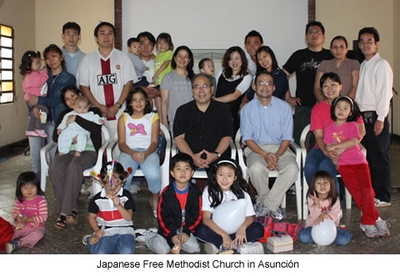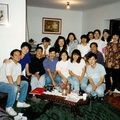September 2008 marked my first opportunity to visit the capital city of Asunción, Paraguay. I had been looking forward to my study trip, and was hoping that I hadn't lost my sense of adventure and the flexibility that would be needed for a two week stay, bookended by two twenty-four hour travel days.
Prior to embarking on my study trip to Paraguay, I dutifully read all I could find (thanks, Google!) on the history of the country. I would learn about the disastrous impact of Paraguay's Great War against the triple alliance of Brazil, Uruguay and Argentina in the 1860's. I puzzled over the pronunciations of vocabulary words in Guaraní, one of the two official languages of Paraguay (the other being Spanish). With my added intention to visit the Japanese communities in Asunción, La Paz and Pirapó, I made certain to read all I could about the history of Japanese immigration and the character of life in both the city and the remote farming colonies. But you know, reading about a place and actually being there are two different things entirely.
I’m not a novice to South America. I worked for eight years in collaborative partnership with communities and churches in Brazil, Argentina and Paraguay during the 1990’s. I had briefly visited the Paraguayan farming colonies of Yguazu, Amambay, Fuji and Pirapó back in 1996. But this fall’s study trip was different as I sought to discover more about the nature of Japanese community life.
Prior to making the trip from Asunción to the Japanese farming colonies of Pirapó and La Paz, I checked out Google maps and was surprised to discover that instead of finding networks of highways, streets, roads and places of interest, I drew a blank page. Well, not completely blank. There was a squiggly grey line that turned out to be the Parana River. To what remote part of civilization would I be traveling?
In truth, Google’s lack of geographical infrastructure was not a problem as I was ably supported by friendships and relationships I had in the city of Asunción. My good friends, Koki and Mari Nowada, would act not only as my guides, my interpreters, but also as instructors in the cultural diversity that is the Japanese community in Paraguay.
From meetings with Issei farmers and Japanese association leaders in the colonies, to the dorm rooms of university students at la Universidad Nacional de Asunción, sitting in the homes of educators employed by the Japanese consulate, as well as non-Nikkei Paraguayans, all provided a range of opportunities for encounter, conversation and study.
One question that arises in my observations and in the thinking of the Paraguayan Nikkei community is the uncertainty of what the future holds. Many post-World War II immigrants are seeing their grandchildren (Sansei) entering the nation's educational system and the workplace. They are also seeing the gradual diminution of the community through the inevitabilities of aging, as well as the transition of a percentage of the younger generation to work and study in Japan. Just as in Brazil and Peru, reverse migration has greatly impacted the cohesion and weakened to some degree the structure and strength of community life.
Paraguayan scholar and social scientist, Emi Kasamatsu writes: "Young and adult Nikkei in Paraguay are considered to be among the most accomplished speakers of Japanese on the continent, and to live in such a way that most closely represents their ancestors' lifestyle and customs."1 One of the principal reasons for this linguistic accomplishment is the network of ten Paraguayan Japanese language schools scattered throughout the country. But this same linguistic capability also serves as a bridge for the younger generation to more readily make the transition to Japan. With this trend toward reverse migration, coupled with the challenges in the worldwide economy, the future of the community is yet to be determined.2
In the meantime, the community moves successfully forward in many different areas of society: agricultural, industrial, commercial and business, and education. As I completed my trip with a visit to the Federation office in Asunción, I was able to purchase a commemorative book of the seventieth anniversary of Japanese immigration. The five-hundred page book is itself a tribute the many accomplishments of the pioneering Issei and the generations that followed. (Of course, I'll need to learn Japanese before I can actually read it).
I am hoping that this will be the first of many study visits that have as their goal the promotion of intercultural understanding, friendship and service to the Paraguayan Nikkei community.
Notes:
1. Hirabayashi, Lane Ryo, Akemi Kikumura Yano, New Worlds, New Lives; "The Nikkei's Education in the Japanese Language in Paraguay," Emi Kasamatsu, p. 126
2. Source: http://federacion.hp.infoseek.co.jp/inmigracion/inmigracion_e.html
© 2008 John Katagi








